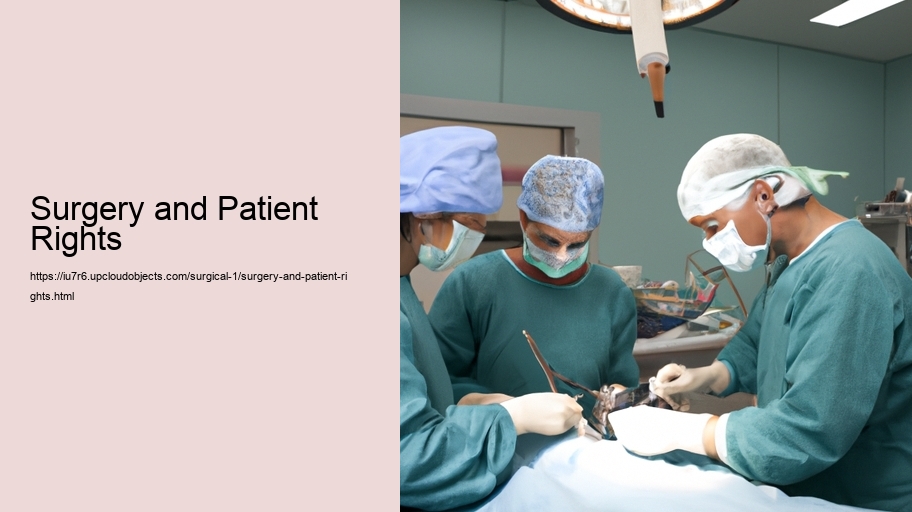Surgery and Patient Rights: An Interwoven Tale of Autonomy and Care
Surgery, a critical intervention aimed at rectifying ailments, repairing damage, or enhancing bodily functions, is a complex blend of science, skill, and ethical considerations. Within this intricate dance of scalpels and sutures, lies a fundamental aspect often overshadowed by the drama of the operating room: patient rights. This essay explores the inextricable link between surgical intervention and the rights of those who lie vulnerable on the operating table.
At the heart of patient rights is the concept of autonomy – the right of individuals to make informed decisions about their own bodies and medical treatment. The journey of a surgical patient begins long before the anesthesia takes effect and the incisions are made. It starts with a conversation, one that is rooted in respect for the individual's ability to understand and weigh the risks and benefits of the proposed surgical procedure.
The principle of informed consent embodies this respect. It is not merely a legal formality, but a fundamental patient right that ensures individuals are not passive subjects but active participants in their own healthcare. Surgeons are obligated to provide comprehensive information about the surgery, including its purpose, the steps involved, the potential risks and benefits, and any available alternatives. This dialogue is essential for patients to make educated decisions that align with their values, beliefs, and preferences.
In emergency situations, where the luxury of time is absent, the principle of implied consent comes into play. Here, it is presumed that a patient would consent to life-saving surgery when incapable of doing so due to their condition. Nevertheless, even in such high-pressure scenarios, the rights of the patient remain a beacon guiding the surgeon's actions.
Confidentiality is another cornerstone of patient rights within the surgical sphere. The sanctity of the information shared between a patient and their medical team is not only a matter of privacy but also of trust. This trust is the foundation upon which the patient-surgeon relationship is built, a relationship that can significantly impact outcomes. The assurance that personal health information will not be disclosed without consent is not only an ethical imperative but a legal one as well.
The right to a standard of care is an assurance that patients will receive surgery from qualified professionals in a safe environment, with appropriate post-operative care and pain management. It is a right that demands surgeons and healthcare facilities maintain a level of skill and expertise that is consistent with current medical standards. This includes staying abreast of technological advancements and evolving techniques that can reduce risks and improve recovery times.
Despite these rights being widely recognized, disparities in their application exist. Factors such as socio-economic status, race, and geographical location can affect access to quality surgical care and the extent to which patient rights are upheld. Advocacy for equal treatment and the dismantling of barriers to care are ongoing challenges that the medical community and society at large must address.
In the event that patient rights are not respected, avenues for recourse must be clear and accessible. The right to seek a second opinion, to refuse treatment, and to be informed of any medical errors are critical components of patient empowerment. Moreover, the establishment of review boards and regulatory bodies ensures accountability and provides a platform for grievances to be heard and addressed.
In conclusion, the relationship between surgery and patient rights is one of mutual reinforcement. The delicate act of performing surgery is not merely a technical endeavor but a moral one, where the rights of the patient serve as both a guide and a measure of the care they receive. As medicine continues to advance, the preservation and advocacy of these rights will remain a testament to the humanity at the core of surgical care. The scalpel may be in the surgeon's hand, but the rights are firmly held within the grasp of the patient, ensuring that their voice resonates through every stitch and suture.
